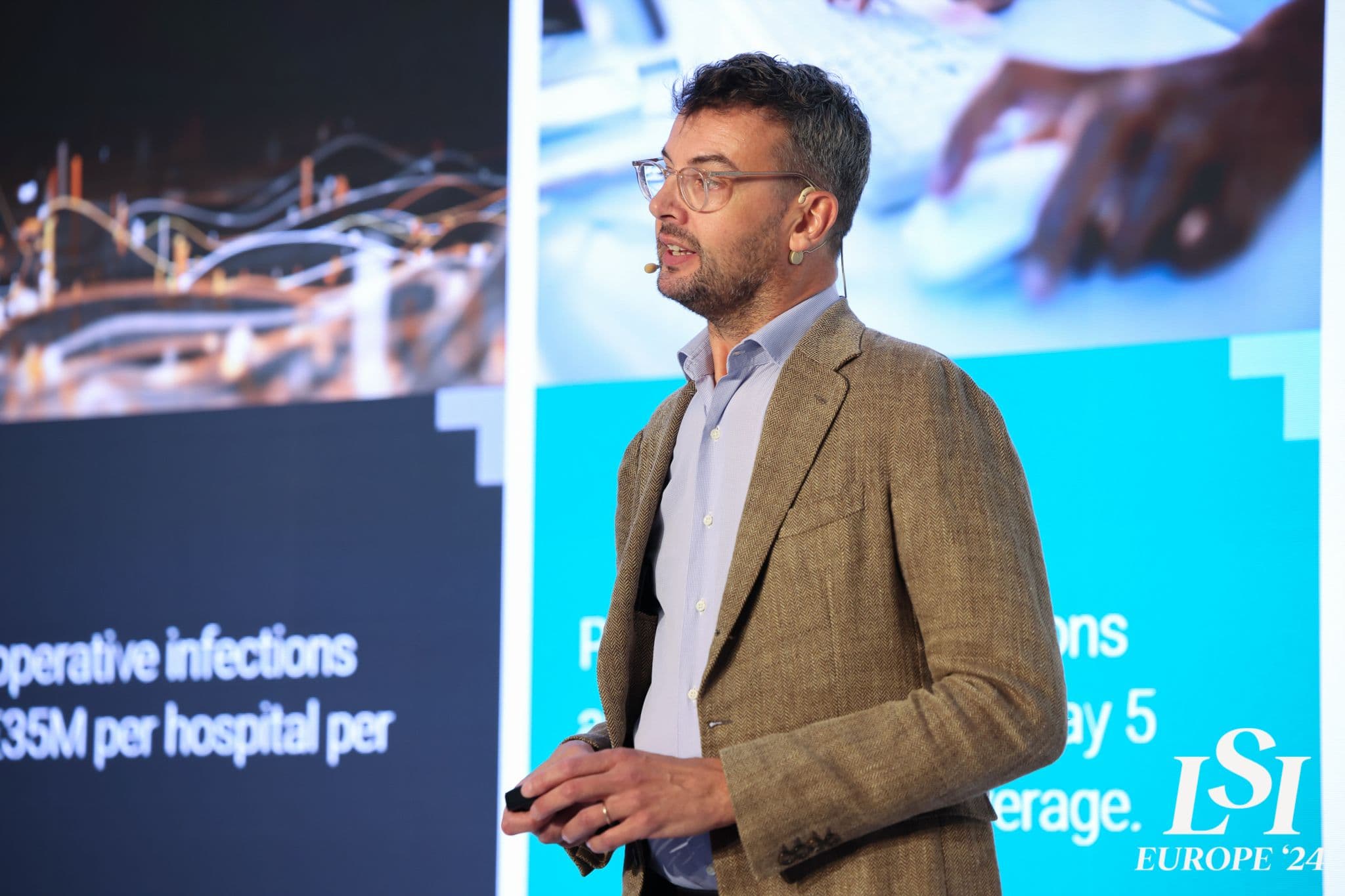'AI and MedTech literacy among clinicians and nurses needs to improve fast'
The US and Europe face starkly different healthcare challenges. Bart Geerts, founder and CEO of Health.Plus.AI, discusses innovation, risk management, and lessons learned from the Cedars-Sinai Accelerator Program.
Published on December 24, 2024

Bart Geerts presenting in Portugal, via Linkedin
Bart, co-founder of Media52 and Professor of Journalism oversees IO+, events, and Laio. A journalist at heart, he keeps writing as many stories as possible.
As healthcare systems across the globe grapple with unique challenges, Bart Geerts—a former ICU physician turned entrepreneur—offers a dual-lens perspective on navigating these complexities. Interviewed by Lucien Engelen at the HLTH event in Las Vegas, Geerts reflected on the differences between European and US healthcare systems, his experience at the Cedars-Sinai Accelerator Program, and the innovative solutions his company brings to the table. "AI and MedTech literacy among clinicians and nurses must improve fast."
Bart Geerts spent 15 years practicing ICU medicine, anesthesia, and clinical pharmacology. Frustrated by the slow pace of translating research into practical healthcare solutions, he shifted his focus to software and artificial intelligence. “If you want to change things, make healthcare more proactive, you probably need to get your hands dirty.”
This shift led to the creation of Health.Plus.AI, an Amsterdam-based company leveraging AI to predict and manage post-surgical infections. The team’s work is now utilized in hospitals across Europe, with a significant step toward the US market following their participation in the Cedars-Sinai Accelerator Program. “We’ve been CE-certified and are implementing our solutions in several hospitals,” Geerts shared. “Looking to the US early helps tailor our technology to meet specific needs.”
Contrasting approaches: Europe vs. the US
One stark difference Geerts highlighted is the approach to risk and reward in healthcare. In the US, physicians often adopt a “maximize everything” mindset, conducting frequent tests and procedures to mitigate liability. In contrast, European healthcare relies more on indication-based interventions, focusing resources where they are deemed most necessary.
“In Europe, you’d use a biomarker only if the patient is at risk,” Geerts explained. “In the US, they’ll use it for everyone in high-risk surgeries, several times a day. It’s a different attitude, shaped by incentives and liability concerns.”
This distinction profoundly influences how innovations like AI are adopted. “In the US, when you identify a risk, they expect you to tell them what to do next,” Geerts noted. “You can’t just present data; you need to offer actionable solutions.”
The role of AI in infection management
Health.Plus.AI’s primary focus is tackling post-surgical infections, which affect one in five patients in the US and account for over half of hospital readmissions. “We’re addressing a significant burden,” Geerts said. “Our AI system predicts infection risks and integrates seamlessly into electronic health records (EHRs), providing clinicians with actionable insights.”
This integration is pivotal. “We’ve ensured our tool sits within the EHR workflow,” Geerts emphasized. “It doesn’t add extra work. Instead, it uses existing data to provide traffic-light-style risk assessments, helping clinicians decide which patients to monitor more closely or discharge safely.”
Lessons from Cedars-Sinai
The Cedars-Sinai Accelerator Program was a game-changer for Health.Plus.AI. Over three months, Geerts and his team engaged with clinicians and executives, receiving critical feedback on their product. “We went back to the drawing board,” Geerts admitted. “Clinicians wanted us to provide not just predictions but also step-by-step guidance. That was a surprise and a valuable lesson.”
The program also underscored the importance of trust in AI. “People need to trust AI solutions,” Geerts said. “It’s not about replacing jobs but augmenting them. With a global scarcity of physicians and nurses, we need tools that reduce administrative burdens and improve patient outcomes.”
For companies looking to expand into new markets, Geerts’ advice is clear: “Assume nothing and research everything.” He emphasized understanding local market dynamics, especially in Europe, which he described as a collection of markets instead of a single entity. "Each European country wants its pilots and local examples,” Geerts explained. “The CE mark might open doors, but building trust and establishing relationships locally is key.”
Predicting medical outcomes
Geerts believes the future of healthcare lies in real-time data predicting outcomes and prescribing actions. He is also passionate about fostering AI and medical technology literacy among clinicians, starting in medical school. “It’s foundational work,” he said. “We must equip healthcare professionals to evaluate and trust new tools.”
Ultimately, Geerts sees innovation as a collaborative effort, with nurses, physicians, and technologists working together to transform care delivery. “Without nurses, there is no healthcare,” he asserted. “We’ve involved nurses in developing our tools because they’ll be key users.”
